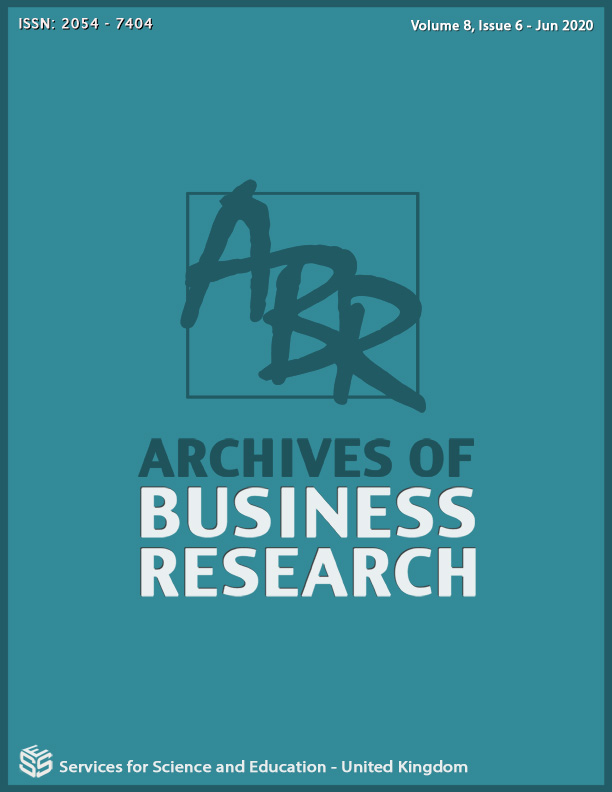ANALYSIS OF COMPETITIVENESS OF THE TOURISM SECTOR EAST JAVA PROVINCE (A TECHNICAL EFFICIENCY & CONVERGENCE APPROACH)
DOI:
https://doi.org/10.14738/abr.86.8585Keywords:
competitiveness, technical efficiency, total factor productivity, Spillover effect, convergence.Abstract
This research analysis of tourism competitiveness is based on the very high disparity problem in the condition of the tourism sector in East Java Province. With a sample of 10 districts / cities and using investment data, tourist visits, population, government spending and tourism sector PDRB, it is produced that investment and tourist visits have a positive but not significant effect on tourism sector PDRB because due to the probability > 0.05. While the population and government expenditure have a positive and significant effect on the tourism sector PDRB due to the probability < 0.05. Fixed effect models that are formed are:PSP = 39485712 + 0.018 INV + 0.389 TOURIST + 22.304 POP + 0.065 GEX + e To measure tourism competitiveness, it is used with technical efficiency and total factor productivity where it is produced: Sidoarjo Regency, Malang City and Surabaya City are regencies / cities that have the highest level of technical efficiency with a value of 100% technical efficiency. Whereas with the calculation of total factor productivity in Gresik Regency (21,350), Jember Regency (16,543) and Kediri Regency (15,650) are regencies / cities that have the highest productivity. Based on the calculation of technical efficiency and total factor productivity results are obtainedL1) High efficiency and productive, Jember Regency; (2) High efficiency and less productive, Sidoarjo Regency, Malang City and Surabaya City; (3) Low and productive efficiency, Kediri Regency, Lamongan Regency and Gresik Regency; and (4) Low efficiency and less productive, Banyuwangi Regency, Pasuruan Regency and Pasuruan City. The spillover effect occurs in Pasuruan City, where the economy of Pasuruan City is affected by investments from Sidoarjo Regency and Surabaya City as indicated by the significance level of 0.051 Surabaya City investment and 0.048 for Sidoarjo Regency investment which means smaller and equal to 0.05. The calculation of convergence shows that the average convergence of regencies / cities in East Java to leader regions over 15 years and 5 months means that districts / cities need an average of 15 years and 5 months to match the conditions of tourism in the city of Surabaya.
References
Barro, X Sala-i-Martin, 1992, Convergence, Journal of political Economy, journals.uchicago.edu
Cooper, William W., Seiford, Lawrence M., and Zhu, Joe (2013). Handbook on Data Envelopment Analysis. Edisi Ke-2 Vol. 164. Springer, New York.
Djojohadikusumo, Sumitro. 1994. Perkembangan Pemikiran Ekonomi : dasar teori ekonomi pertumbuhan dan ekonomi pembangunan. Edisi pertama, Jakarta : Pustaka LP3ES.
Estrada, et all, 2013, Patterns of Convergence and Divergence in The Euro Area, The National Bureau of Economic Research.
Gujarati, D. (2005). Basic Econometrics. Edisi Ke-5. McGraw Hill, New York.
Hidayat, Anwar, (2012), “Penjelasan Analisis Data dan Rancangan Analisis Data”, (Online), (https://www.statistikian.com/2012/10/rancangan-analisa-data.html, diakses pada 03 April 2018).
Irawati dkk, 2008, Analisis Daya Saing Kota Medan, Portal Garuda.
Jhingan, M.L., 2002, Ekonomi Pembangunan dan Perekonomian, Jakarta : PT. Raya Grafindo Persada.
KPPOD, 2005, Daya Saing Investasi Kab/kota Di Indonesia 2005, LPEM-FEUI.
Ohmae, Kenichi, 1995, The End of Nation State: The Rise of Regional Economies, The Free Press.
PPSK, 2008, Profil dan Pemetaan Daya Saing Ekonomi Daerah Kab/Kota Di Indonesia, BI.
Sriyana, Jaka, 2014. Metode Regresi Data Panel. Edisi Ke-1 Cetakan Ke-1, Ekonisia, Yogyakarta.
Sugiyono (2013). Metode Penelitian Manajemen. Cetakan Ke-3. Penerbit Alfabeta, Bandung.
Sugiyono (2017). Metode Penelitian Kuantitatif, Kualitatif, dan R & D. Cetakan Ke-25. Penerbit Alfabeta, Bandung.
Suliyanto 2011. Ekonometrika Terapan : Teori dan Aplikasi dengan SPSS. Edisi Ke-1. Penerbit Andi, Yogyakarta.
Todaro Michael P, 2000. Economic Development, Fifth Edition, New York University, USA.
Winarno, Wing Wahyu 2015. Analisis Ekonometrika dan Statistika dengan Eviews. Edisi Ke-4 Cetakan Ke-1. UPP STIM YKPN, Yogyakarta.
World Economic Forum. 2009. The Index of competitiveness. WEF, USA.






